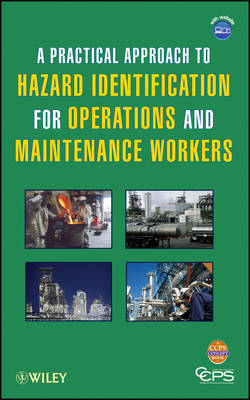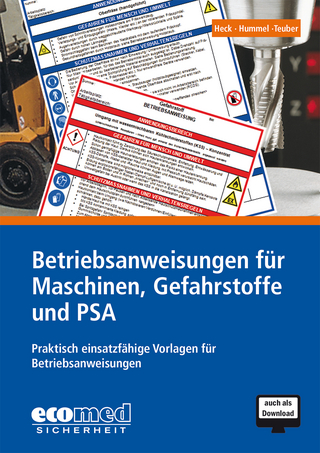
A Practical Approach to Hazard Identification for Operations and Maintenance Workers
Wiley-Blackwell (Hersteller)
978-0-470-64264-1 (ISBN)
- Keine Verlagsinformationen verfügbar
- Artikel merken
The first part of this book (Chapters 1 and 2) provides an introduction and discusses basic concepts. Chapter 3 deals with the use of the basic human senses for identifying hazards. Chapter 4 deals with different classes and categories of hazards. Chapter 5 deals with techniques and methodologies for identifying and evaluating hazards. Chapter 6 deals with making risk based decisions. Chapter 7 deals with follow-up and call to action. Chapter 8 deals with learning and continuous improvement. The Appendices provide references, case studies, hazard presentations and additional pictures. Note: CD-ROM/DVD and other supplementary materials are not included as part of eBook file.
THE CENTER FOR CHEMICAL PROCESS SAFETY (CCPS) was established by AIChE in 1985 to study and develop engineering and management practices that help prevent or mitigate catastrophic process safety accidents. CCPS publications provide the latest guidelines for the production, storage, and handling of flammable, explosive, and reactive materials. With the help of CCPS, companies can operate facilities safely and measure their own practices against today's most accepted industry practices.
Preface. Acknowledgment. Items on CD. 1 INTRODUCTION. 1.1 Intended Audience. 1.2 How to Use This Book. References. 2 BASIC CONCEPTS. 2.1 Hazard and Risk. 2.2 Accident Model. 2.3 Physical and Process Hazards. 2.4 Benefits of Hazard Identification. 2.5 Hazards Types by Industry. 2.6 References. 3 IDENTIFY HAZARDS. 3.1 Concept of Recognition. 3.2 Basic Human Senses. 3.3 Relationship Between Senses and Higher Order Processes. 3.4 Influence of Human Capabilities and Limitations on Hazard Identification. 3.5 What Causes Hazards? 3.6 References. 4 TYPES OF HAZARDS. 4.1 Explosion Hazards. 4.2 Chemical Hazards. 4.3 Electrical Hazards. 4.4 Excavation Hazards. 4.5 Asphyxiation Hazards. 4.6 Elevation Hazards. 4.7 Thermal Hazards. 4.8 Vibration Hazards. 4.9 Mechanical Failure Hazards. 4.10 Mechanical Hazards. 4.11 Corrosion Hazards. 4.12 Noise Hazards. 4.13 Radiation Hazards. 4.14 Impact Hazards. 4.15 Struck Against Hazards. 4.16 Visibility Hazards. 4.17 Weather Phenomena Hazards. 4.18 References. 5 EVALUATE HAZARDS. 5.1 Field Surveys. 5.2 Pre-Job Assessments. 5.3 Facility Assessments. 5.4 Incident and Near-Miss Reporting. 5.5 Hazard Identification and Analysis Training. 5.6 References. 6 MAKE RISK - BASED DECISIONS. 6.1 Hazard Ranking 15. 6.2 Understanding Risk. 6.3 Risk Ranking. 6.4 References. 7 FOLLOW - UP AND CALL TO ACTION. 7.1 Safety Culture. 7.2 Management Commitment. 7.3 Employee Ownership. 7.4 Implement an Effective Hazard Management Program. 7.5 Hazard Communication. 7.6 Call to Action. 7.7 References. 8 LEARNING AND CONTINUOUS IMPROVEMENT. 8.1 Case Study - Oil Refinery Fire, 2007. 8.2 Importance of Managing Change. 8.3 Published Accident Databases and Resources. 8.4 Revitalizing Lessons Learned. 8.5 Transfer of Knowledge. 8.6 Learning from Incidents. 8.7 References. List of Figures. List of Tables. Index.
| Erscheint lt. Verlag | 24.8.2010 |
|---|---|
| Verlagsort | Hoboken |
| Sprache | englisch |
| Themenwelt | Naturwissenschaften ► Chemie ► Technische Chemie |
| Technik ► Maschinenbau | |
| Technik ► Umwelttechnik / Biotechnologie | |
| ISBN-10 | 0-470-64264-5 / 0470642645 |
| ISBN-13 | 978-0-470-64264-1 / 9780470642641 |
| Zustand | Neuware |
| Haben Sie eine Frage zum Produkt? |
aus dem Bereich
